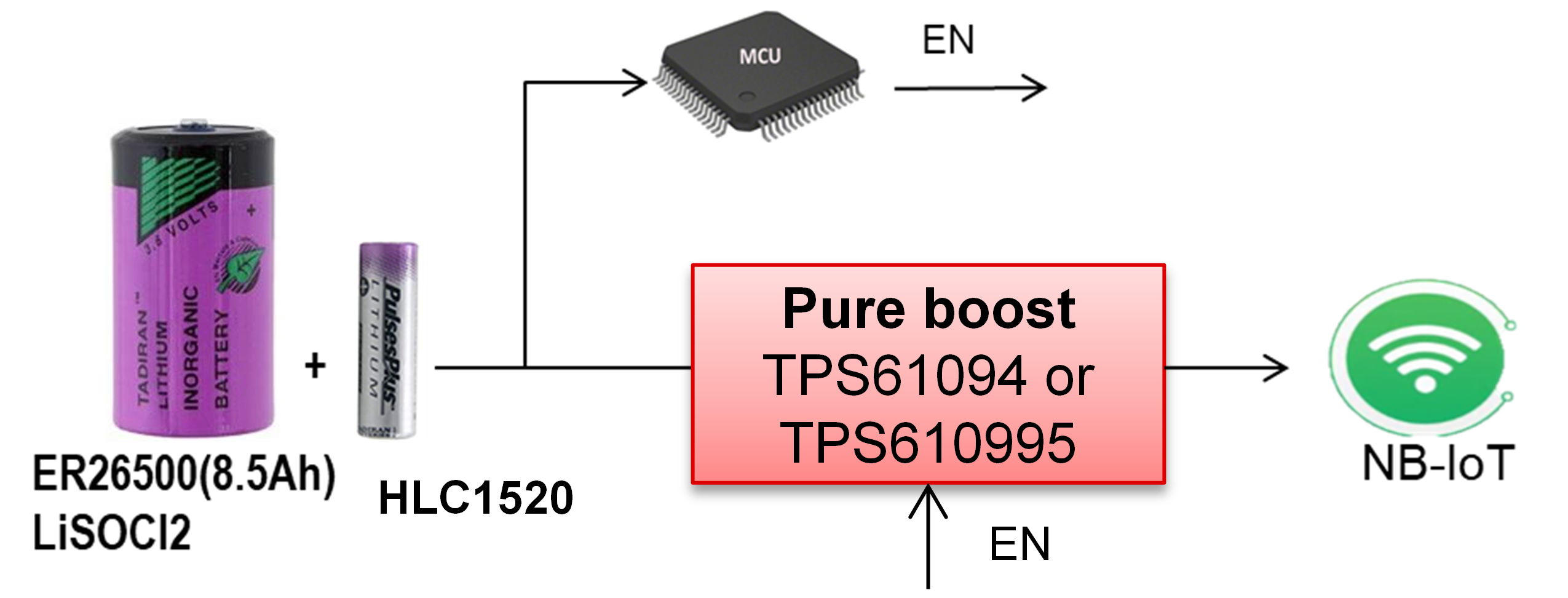SLVAF41A March 2021 – November 2021 TPS61094
2.2 The Pure Boost TPS61094 or TPS610995 Solution
One of the cost competitive solutions is the pure boost (TPS61094 or TPS610995) solution (reference 4), similar to Figure 2-4. In this solution, customers could use HLC1520(vender: Tadiran), SPC1520(vendor: EVE) or UPC1520(vender: HCB) and they need to add a pure boost (TPS61094 or TPS610995) to regulate output voltage to about 3.6 V over the whole temperature range. This solution is not sensitive to HLC vendor and size, so the total cost is more competitive than the connecting battery directly.
 Figure 2-4 The Pure Boost TPS61094 or
TPS610995 Solution
Figure 2-4 The Pure Boost TPS61094 or
TPS610995 SolutionThe weakness of the pure boost solution is that the discharge current of LiSOCl2 battery is uncontrolled. We cannot get the maximum LiSOCl2 battery capacity, and the end-off voltage of the battery package is not controllable. If the terminal voltage is too low(< 2 V), it has unrecoverable effects on the battery lifetime.